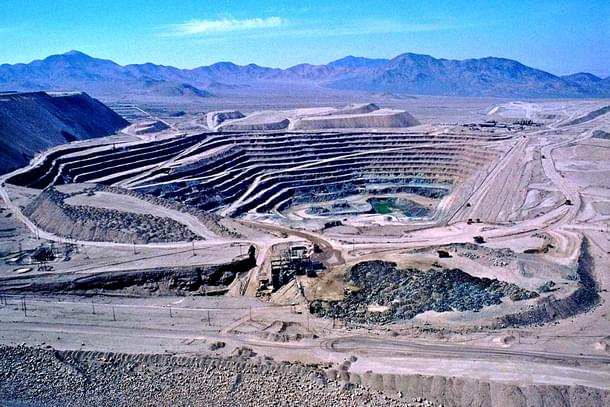News Brief
India's Push For Critical Minerals Goes Global As State-Run Miners Eye Lithium Mines In Chile, Australia
Kuldeep Negi
May 15, 2024, 01:34 PM | Updated 01:34 PM IST
Save & read from anywhere!
Bookmark stories for easy access on any device or the Swarajya app.


India's state-run miners are scouting for lithium mines in Chile and Australia, as part of a broader strategy to secure critical minerals essential for the country's burgeoning electric vehicle (EV) sector.
Secretary of Mines V L Kantha Rao said on Wednesday (15 May) that Coal India and NMDC are exploring lithium mines in Chile and Australia.
Rao also said that the Mines Ministry is also encouraging other state-owned companies, such as ONGC Videsh, to explore critical minerals overseas, Economic Times reported.
Speaking to mediapersons on the sidelines of an industry conference in New Delhi, Rao said India will additionally take a delegation to Zambia in June, with executives from the Tata Group and Vedanta.
The focus will be on discussing joint exploration ventures for critical minerals like lithium with the Zambian government.
Further, a separate delegation will be sent to the Democratic Republic of Congo, Rao noted.
India is also exploring the possibility of expanding an existing trade agreement with Chile to encompass critical minerals, facilitating easier government access, Rao said.
Further, the government is examining trade routes with Mongolia to explore opportunities in copper and coal assets, he added.
This aggressive push by the government for critical mineral exploration aligns with India's ambitious environmental goals.
At the COP26 conference, Prime Minister Narendra Modi had committed to achieving net zero emissions by 2070.
As the world's third-largest emitter of CO2, India's strategy heavily relies on the electrification of its transportation sector and the adoption of EVs, which in turn demands a substantial supply of lithium-ion (Li-ion) batteries.
According to S&P Global Mobility's AutoTechInsight, the demand for Li-ion batteries in India is projected to surge from 4 gigawatt hours (GWh) in 2023 to nearly 139 GWh by 2035.
A significant portion of this demand will come from the light vehicle segment, pivotal for Indian commutes and commerce.
This transition is poised to reshape the sourcing and production landscape for battery components, presenting opportunities for domestic localisation of EV and battery production.
Currently, India's battery cell manufacturing capabilities are nascent, with a significant reliance on imports from Greater China, South Korea, and Japan.
However, this is set to change as India strives for self-sufficiency. By 2030, it is anticipated that 13 per cent of total cell demand will be met domestically, with the remainder still outsourced.
The government has introduced policies such as the Production-Linked Incentive (PLI) scheme for advanced chemistry cell (ACC) battery storage and the Faster Adoption of Manufacturing Electric Vehicles (FAME) scheme, which have spurred investments and strategic partnerships.
Indian OEMs are making significant investments in local cell manufacturing facilities, which would require a consistent supply of lithium, and the government's push for exploration of the critical mineral is expected to boost the local production of the batteries.
Kuldeep is Senior Editor (Newsroom) at Swarajya. He tweets at @kaydnegi.




